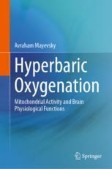Search
Search Results
-
GSDMD gene knockout alleviates hyperoxia-induced hippocampal brain injury in neonatal mice
BackgroundNeonatal hyperoxia exposure is associated with brain injury and poor neurodevelopment outcomes in preterm infants. Our previous studies in...

-
Hyperoxia and brain: the link between necessity and injury from a molecular perspective
Oxygen (O 2 ) supplementation is commonly used to treat hypoxia in patients with respiratory failure. However, indiscriminate use can lead to...

-
Recruitment of PVT1 Enhances YTHDC1-Mediated m6A Modification of IL-33 in Hyperoxia-Induced Lung Injury During Bronchopulmonary Dysplasia
Bronchopulmonary dysplasia (BPD) is a chronic lung disease that specifically affects preterm infants. Oxygen therapy administered to treat BPD can...

-
Protective effect of resveratrol on mitochondrial biogenesis during hyperoxia-induced brain injury in neonatal pups
BackgroundNeonatal hyperoxic brain injury is caused by exposure to hyperphysiological oxygen content during the period of incomplete development of...

-
Intranasal administration of Lactobacillus johnsonii attenuates hyperoxia-induced lung injury by modulating gut microbiota in neonatal mice
BackgroundSupplemental oxygen impairs lung development in newborn infants with respiratory distress. Lactobacillus johnsonii supplementation...

-
Effects of Age on the Responses to Hyperbaric Hyperoxia
Age is a natural factor that has been found to significantly affect sensitivity to hyperbaric hyperoxia (HBO). Exposure to HBO may lead to damage to...
-
Brain Multiparametric Responses to Hyperbaric Hyperoxia
To elucidate the mechanism of brain toxicity developed under hyperbaric oxygenation (HBO), a multiparameter monitoring approach was adopted. ln the...
-
Protective Effects of 18β-Glycyrrhetinic Acid on Neonatal Rats with Hyperoxia Exposure
Bronchopulmonary dysplasia (BPD) is a common devastating pulmonary complication in preterm infants. Supplemental oxygen is a lifesaving therapeutic...

-
Regulating NLRP3 Inflammasome–Induced Pyroptosis via Nrf2: TBHQ Limits Hyperoxia-Induced Lung Injury in a Mouse Model of Bronchopulmonary Dysplasia
Nuclear factor e2–related factor 2 (Nrf2) plays a key role in cellular resistance to oxidative stress injury. Oxidative stress injury, caused by Nrf2...

-
Calcitonin Gene-Related Peptide Attenuates Hyperoxia-Induced Oxidative Damage in Alveolar Epithelial Type II Cells Through Regulating Viability and Transdifferentiation
As a stem cell of alveolar epithelium, the physiological status of alveolar epithelium type II cells (AECII) after hyperoxia exposure is closely...

-
Hyperbaric Hyperoxia in Patients After Chest Injury or Ischemic Stroke
Hyperbaric oxygenation (HBO2) is an important treatment given to various groups of patients exposed to pathologic situations (i.e., carbon monoxide...
-
GTS-21, an α7nAChR agonist, increases pulmonary bacterial clearance in mice by restoring hyperoxia-compromised macrophage function
BackgroundMechanical ventilation, in combination with supraphysiological concentrations of oxygen (i.e., hyperoxia), is routinely used to treat...

-
AMPK/MTOR/TP53 Signaling Pathway Regulation by Calcitonin Gene-Related Peptide Reduces Oxygen-Induced Lung Damage in Neonatal Rats through Autophagy Promotion
Our previous studies indicated that calcitonin gene-related peptide (CGRP) alleviates hyperoxia-induced lung injury and suggested the possible...

-
Time Series Tracking of Cerebral Microvascular Adaptation to Hypoxia and Hyperoxia Imaged with Repeated In Vivo Two-Photon Microscopy
The present study describes methodological aspects of image analysis for angiographic image data with long-term two-photon microscopy acquired for...
-
CXCL10 deficiency limits macrophage infiltration, preserves lung matrix, and enables lung growth in bronchopulmonary dysplasia
Preterm infants with oxygen supplementation are at high risk for bronchopulmonary dysplasia (BPD), a neonatal chronic lung disease. Inflammation with...

-
Targeting adenosine A2A receptors for early intervention of retinopathy of prematurity
Retinopathy of prematurity (ROP) continues to pose a significant threat to the vision of numerous children worldwide, primarily owing to the...

-
Tenascin-C modulates alveolarization in bronchopulmonary dysplasia
Bronchopulmonary dysplasia (BPD) is a chronic lung disease characterized by retarded alveolarization. Tenascin-C (TN-C), an extracellular matrix...

-
Antimicrobial peptides modulate lung injury by altering the intestinal microbiota
BackgroundMammalian mucosal barriers secrete antimicrobial peptides (AMPs) as critical, host-derived regulators of the microbiota. However,...

-
Loss of microRNA-30a and sex-specific effects on the neonatal hyperoxic lung injury
BackgroundBronchopulmonary dysplasia (BPD) is characterized by an arrest in lung development and is a leading cause of morbidity in premature...

